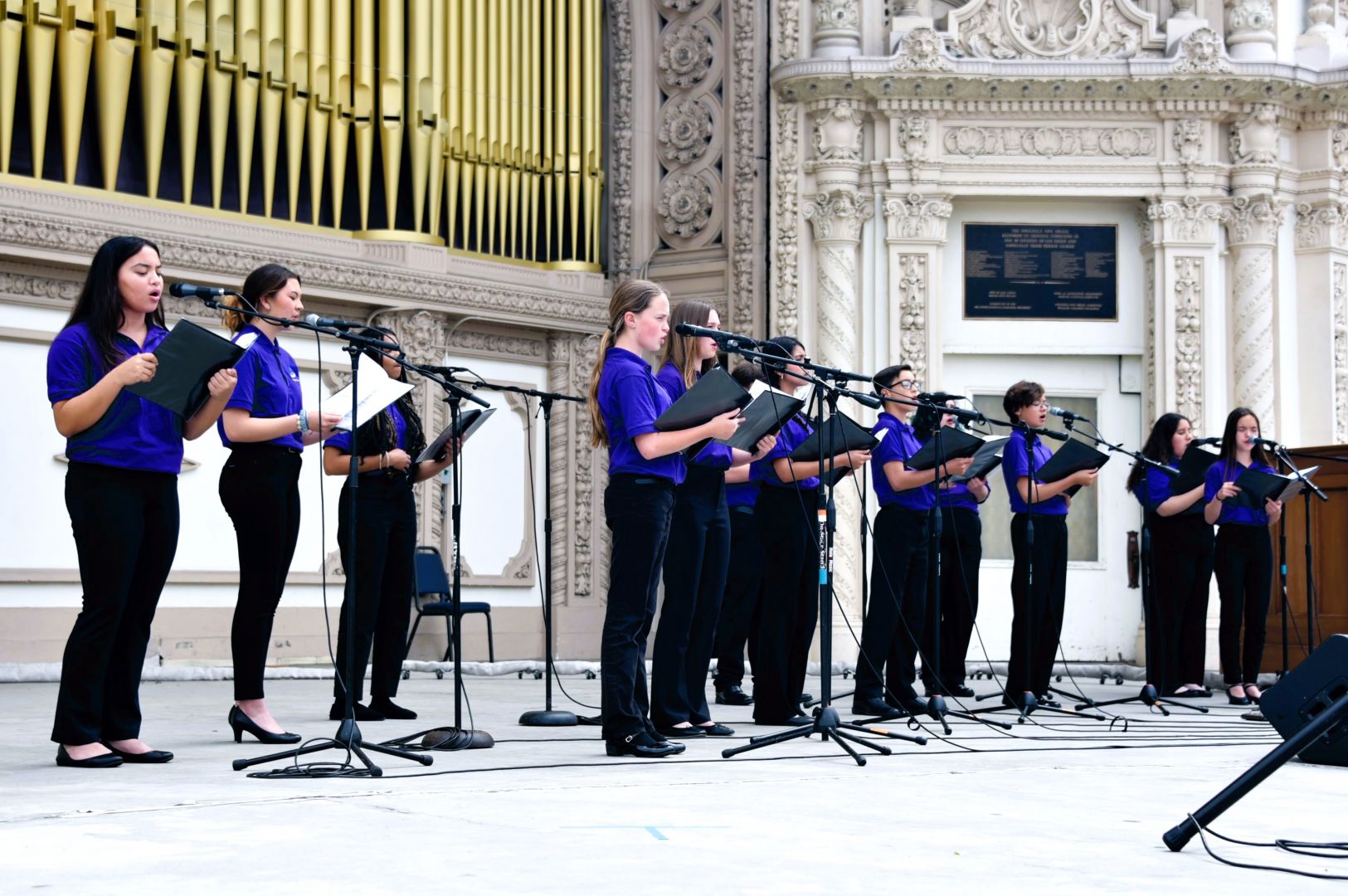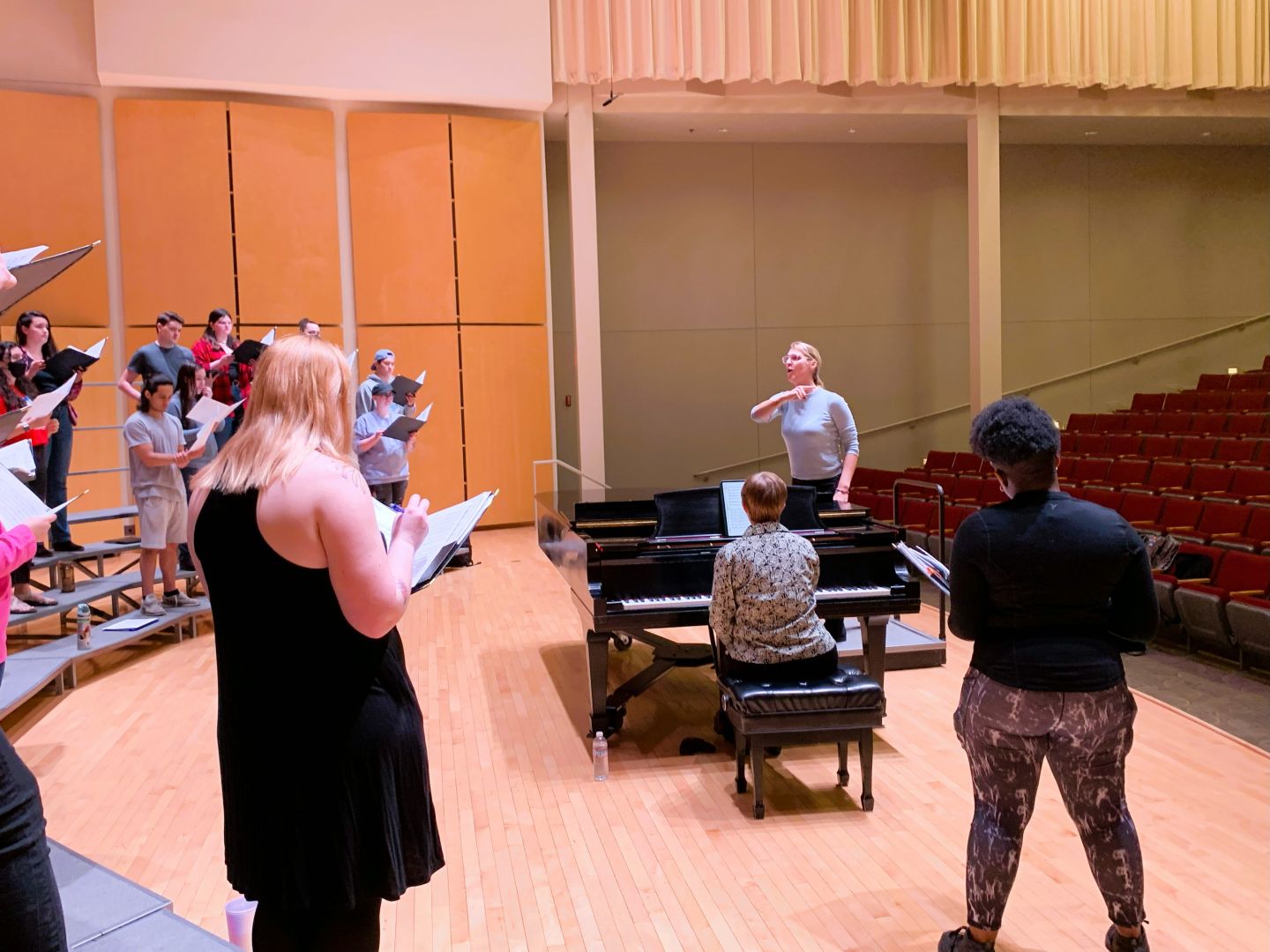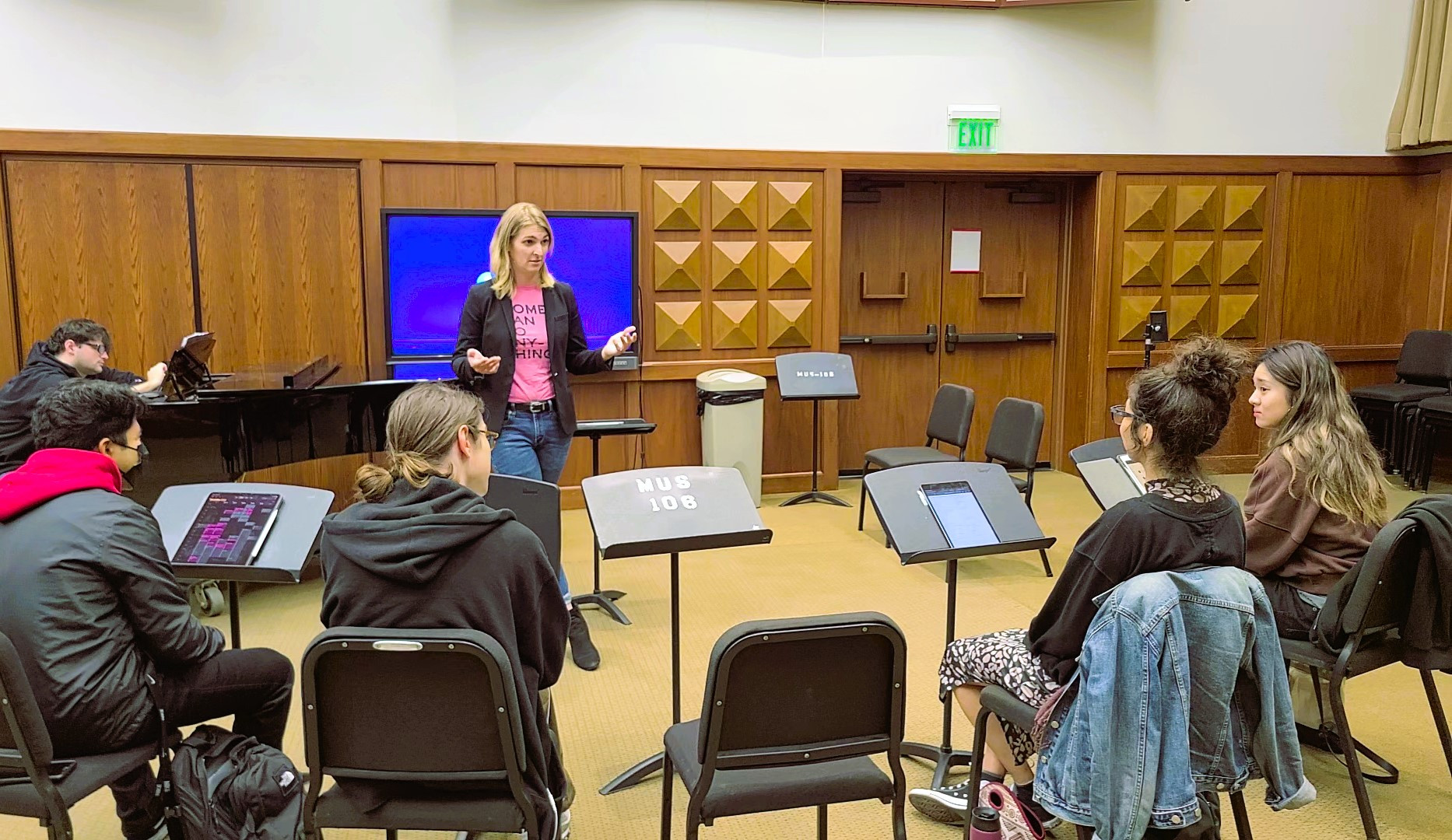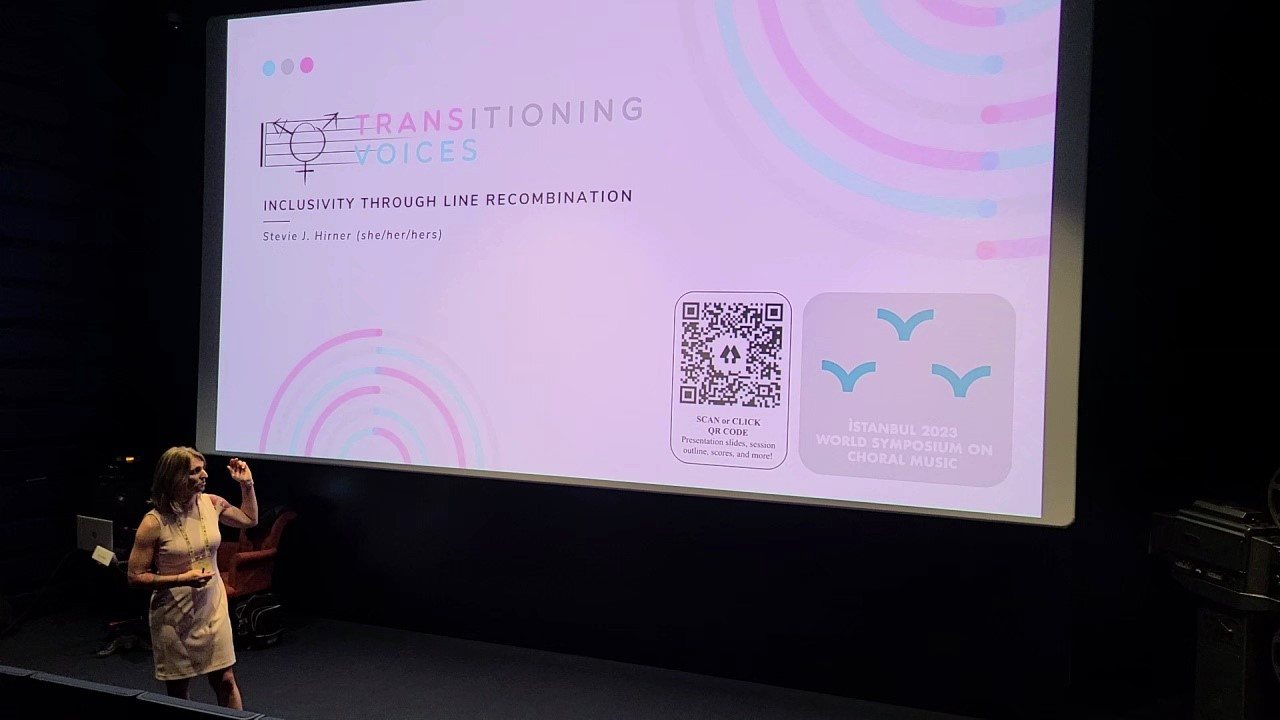Meet Stevie J. Hirner | Founder, (Trans)itioning Voices | Conductor | Educator | Singer | Composer & Arranger


We had the good fortune of connecting with Stevie J. Hirner and we’ve shared our conversation below.
Hi Stevie J., what principle do you value most?
In society today, transgender and gender-expansive (TGE) individuals face a disproportionate amount of hardship than their cisgender peers. The world seems reluctant to understand and accept their identities, and this manifests in countless ways, big and small. From something as seemingly innocuous as ignoring one’s correct pronouns or their chosen name to the plethora of anti-trans legislation that has become far too commonplace in recent years, TGE individuals are forced to justify their very existence on a regular basis.
Unfortunately, the choral community is not immune to this reality. Historically, singers—and choirs more specifically—have operated in a strikingly gendered arena. Everything from voice part to the clothes singers wear is fraught with the divisions of the traditional gender binary. While the inclusion of TGE individuals has become a more visible and increasingly discussed topic in recent years at many regional and national choral conferences—featuring interest sessions on terminology, potential vocal changes, and other accommodations such as inclusive choral attire and identity-affirming choral placement, there is still a lack of actionable, pedagogically-based tools that directors can use in their rehearsals and performances.
For instance, while I was teaching in public schools and before I was “out” as transgender, I frequently saw the struggle of my TGE students as they tried to reconcile where their voices fit in the ensemble with their gender identity. Some wanted to sing a lower part than they were capable, some a higher one, but in either case, they likely wouldn’t be able to sing everything their desired voice part in an SATB ensemble demanded of them. Then, as I began to research this topic during my doctoral studies, I realized: What if there was a line that choristers could sing in-between tenor and alto to help these singers feel more comfortable being authentic?
After exploring the idea, it became clear that the existence of such a line could make a significant impact on TGE individuals’ experiences, and it would only require a simple reapplication of a skill that directors already have. This idea led to a new methodology that I call line recombination. Building off of the adaptations made by middle school choir directors to vocal lines and the frequent doublings of different voice parts employed by conductors such as Robert Shaw, I created a set of parameters that directors can follow to create a new vocal line from the existing alto and tenor lines: one that isn’t constricted by the gendered norms of traditional sections and supports singers before, during, and after vocal transition. Through the recombination of vocal lines in their repertoire, choral directors can help to combat the potential bias and uncertainty surrounding the inclusion of transgender and gender-expansive (trans) singers in choral ensembles by providing an alternative that can meet the vocal needs of those individuals without compromising musical integrity.

Alright, so let’s move onto what keeps you busy professionally?
1) What sets me apart or am I most proud of? In short: I am a professional musician, conductor, and educator, and after six years of public school teaching, I moved to Los Angeles to begin my doctorate in choral music, and since then, I have been fortunate to be the Artistic Director of the Long Beach Youth Chorus in addition to founding (Trans)itioning Voices—an organization dedicated to the advocacy of transgender singers, developing a methodology called “Line Recombination,” and having the opportunity to serve as a resource for young transgender and gender expansive (TGE) individuals.
In recent years, the inclusion of TGE singers has become a more visible and increasingly discussed topic in both national and regional conferences of the various professional choral organizations in America. These have featured interest sessions on terminology, vocal changes due to hormone replacement therapy (HRT) along with the related vocal pedagogy, and some logistical accommodations that choral directors can employ in their classrooms such as inclusive choral attire and identity-affirming choral placement. However, apart from these worthy topics of discussion, there is a lack of actionable, research-informed tools developed by TGE communities themselves that address the vocal needs of TGE singers in choral ensembles.
So, as a transgender woman and professional musician, I have focused my research during my doctoral studies in choral music at the University of Southern California (USC) on TGE inclusivity, which has resulted in developing my methodology, “Line Recombination,” that is gaining national and international attention—especially after publishing an article on my methodology in the November/December 2022 issue of the Choral Journal, an internationally distributed scholarly publication. I have also been fortunate to present on this topic at multiple universities and professional conferences over the last eighteen months or so, including the Western Division of the American Choral Directors’ Association (ACDA) in 2022, the 2023 ACDA National Conference, and the 2023 World Symposium on Choral Music in Istanbul, Turkey in the Spring of 2023.
Line recombination is a codified methodology of creating a new, intermediate vocal line by combining portions of the existing alto and tenor lines in a composition in order to provide an accessible vocal line that can be sung by individuals seeking to perform a voice part that traditionally corresponds to their affirmed gender identity. Normalizing the use of line recombination to help TGE singers can provide actionable alternatives for singers who may be transitioning between voice parts in order to align better with their gender identity. To supplement my research, I have launched a crowdsourced Recombined Choral Library on my website www.transitioningvoices.org where recombined lines can be created and accessed by the public along with several other resources on gender inclusivity in singing.
2) How did I get to where I am and overcome challenges? What are the lessons I’ve learned? What do I want people to know about my story?
After moving to a small town in the South from Whitehall, Pennsylvania when I was nine, I consistently felt that I did not belong. To fit in, I buried my emotions, my sensitivities, my curiosities, and anything else that was outside of the norms of the masculine behavior modeled by those around me. With every layer of my façade, I put aside the ways I could help or support others and became more focused on proving to everyone that I could elevate myself and “get out.” In the 15 years since I left, I became frighteningly aware of the impact that being raised as a middle-class, white, cisgender, heterosexual man had on me. I was able to move through the world without any concern about whether or not my rights would ever be taken away, and that privilege led to a naïve, out-of-touch perspective regarding the injustices that pervade our society.
A lifetime of majority-white schools and environments could not prepare me for my first teaching job at a Title I school on the westside of Chicago that thrust me into a world where I saw first hand many of the issues that Black communities face. Every day shined a light on the countless ways that society was built to make it as hard as possible for people like my students to exist, let alone thrive, and when I moved to Miami, the reality continued to crystallize, except now I was learning from my Latin American students who were the majority. My experiences with my amazing, powerful BIPOC students in Chicago and Miami fundamentally changed who I am. I learned to acknowledge the profound impact of colonization on society, to practice empathy, to honor cultures outside of my own, and most importantly: to stop taking up so much space and just listen.
Concurrently with examining the role that whiteness plays in society and in my life, I began to explore my gender in my early to mid twenties, which led to deconstructing my internalized misogyny and eventually to discovering my own identity as a trans woman. With the demolition of every wall I had built to protect myself, I was able to embrace my authentic self more and more, and eventually, I was faced with a decision: embrace my identity as a trans woman and sacrifice my “male” privilege (and likely my marriage) or ignore my truth and cling to masculinity; and few years later—in the summer of 2020—I hit the reset button on every aspect of my life and got divorced, came out publicly, and left teaching in public schools to move to Los Angeles from Miami in order to begin my doctorate at USC. Undergoing so many changes in such a short amount of time was by far the most difficult set of circumstances that I have ever had to navigate, but I have been fortunate to be able to channel that adversity into my commitment to my platform; and in a lot of ways, knowing what I walked away from in order to be myself gives me a sense of purpose—a need to make the best of what I have learned, experienced, and lost so that I can build off of that knowledge to become the best mentor, teacher, friend, and person I can. In my classrooms and with the Long Beach Youth Chorus, I strive to build a community around me that celebrates the diversity of each person and to create a space where emotion and vulnerability are not weaknesses but strengths, and through my research, I have been able to provide resources to others to promote gender and sexuality inclusivity in choirs and in society in general. And most importantly: I am fully committed to a life of learning—always striving to acknowledge that which I do not know, seeking to understand rather than to dismiss, and using music as a conduit to bring people together in unity and celebration of one another.

Let’s say your best friend was visiting the area and you wanted to show them the best time ever. Where would you take them? Give us a little itinerary – say it was a week long trip, where would you eat, drink, visit, hang out, etc.
Definitely eat at El Coyote, drinks at Umbrella Co., and probably go to a queer event hosted by CherryBomb Weho or Damn Good Dyke Nights. And of course, I would have to take them to AIR — Aerial Fitness where I am also an instructor so that they can try aerial silks!

Who else deserves some credit and recognition?
The exploration of my platform began during my doctoral studies at the University of Southern California (USC) under the guidance of one of my mentors, Dr. Cristian Grases. His encouragement to apply to present my research at regional, national, and international conferences has led to a significant portion of my success.
I would also like to thank Dr. Tram Sparks, the Chair of the Department of Choral and Sacred Music at USC, for her continued leadership, kindness, and support throughout my time in Southern California.
I also want to thank the authors of Honoring Trans and Gender Expansive Students in Music Education, Drs. Matthew Garrett and Joshua Palkki. Seeing their presentation at a conference in Florida in 2018 gave me hope that I could be my authentic self in the academic choral field, and because of the support I’ve received from them in the development of my research, I am grateful to now be counted amongst their colleagues.
Lastly, I would like to thank Jace Saplan, Director of Choral Activities at Arizona State University, for their continued encouragement and support. Jace is a force in the choral field, particularly due to their unmatched commitment to the decolonization of choral music in matters of gender, sexuality, race, culture, and ethnicity.

Website: www.transitioningvoices.org
Instagram: https://www.instagram.com/transitioning_voices/
Linkedin: https://www.linkedin.com/in/steviejhirner/
Other: https://linktr.ee/transitioningvoices
Image Credits
Photographer: Natalie Costello Only the main black and white photo and the pink dress studio photo
